This Post May Contain Affiliate Links. Please Read Our Disclosure Policy.
Kill germs on surfaces with these easy and affordable DIY disinfectant wipes. Made with simple but strong antiviral ingredients, these DIY Lysol or Clorox wipes are easy to make to keep your home clean. Oh… and they smell amazing!
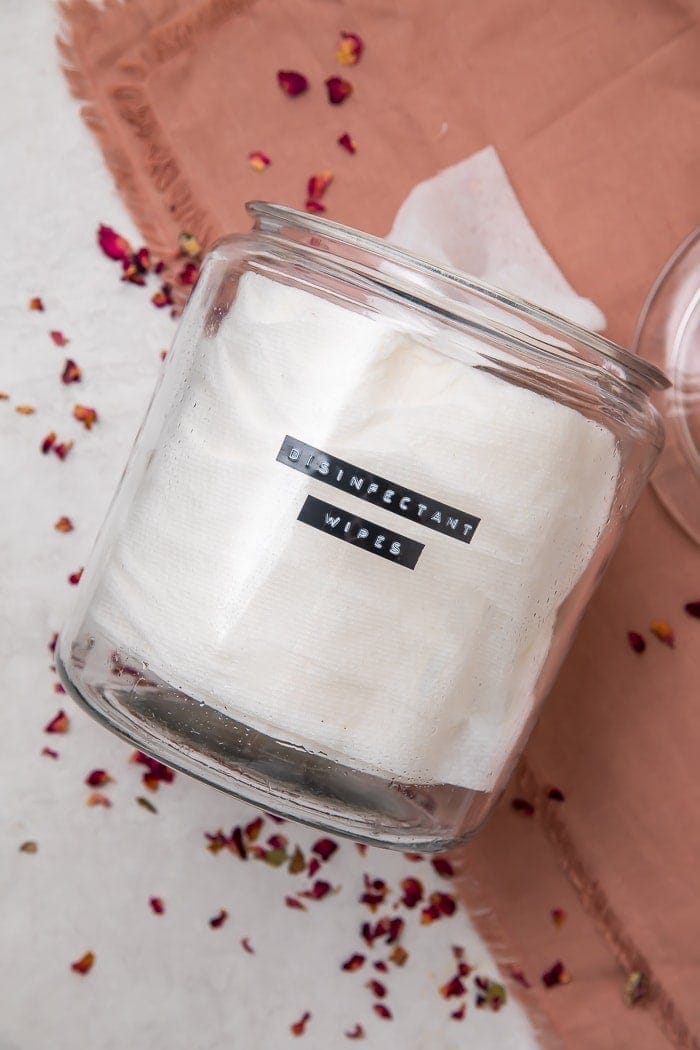
Disclaimer: We are not medical professionals, and we don’t play them on the internet. We are not chemical formulators, pharmacists, or anything other than moms who like to DIY germ-fighting household products. This is not medical advice! Use at your own risk.
Make sure to use at least 60% alcohol in your DIY Lysol or Clorox wipes, or they will not be effective. Studies have shown a minimum of 62% alcohol is effective.
Also check out our DIY disinfectant spray and DIY hand sanitizer!
Why You Should Make These DIY Disinfectant Wipes
- It’s incredibly effective! So long as you use at LEAST 60% alcohol. I used much higher.
- It’s ridiculously cheap! You can find 16 oz. 91% isopropyl alcohol – the bulk ingredient of the wipes – for $0.99.
- It’s easy to customize the scent. I used a combination of lemon and tea tree (I’ll tell you why in a minute), but you can really customize these wipes to smell whatever is most appealing to you.
- Hydrogen peroxide majorly helps kill germs.
What To Use These Wipes On
Should go without saying, but these wipes are not for use on yourself or others, no matter how gross your kids are!
You can use this on most surfaces, especially places that are high-touch like sink handles, fridge handles, doorknobs, phones, and remotes. We definitely recommend testing on a small area before wiping down any furniture with finishing or that has been painted.
Ingredients
While these DIY Lysol wipes only use paper towels and 4 other ingredients, each one has a purpose:
- alcohol, preferably ethanol (ethyl alcohol AKA Everclear)
- distilled water
- hydrogen peroxide
- essential oils

How to Make DIY Lysol or Clorox Wipes
I used a 1-gallon Anchor Hocking jar with a lid and didn’t have to smush the paper towels down to fit at all. It worked perfectly, but you could also use a large plastic jar.
Make sure you use sharp non-serrated knife when cutting the paper towel roll in half. I cut through the paper towels, all the way around the roll, then gently spread the two sections apart and cut through the inner roll
I used 30 drops of lemon essential oil and 15 drops tea tree. The wipes smelled incredible!
Make sure to use select-a-size paper towels or you’ll have massive wipes!
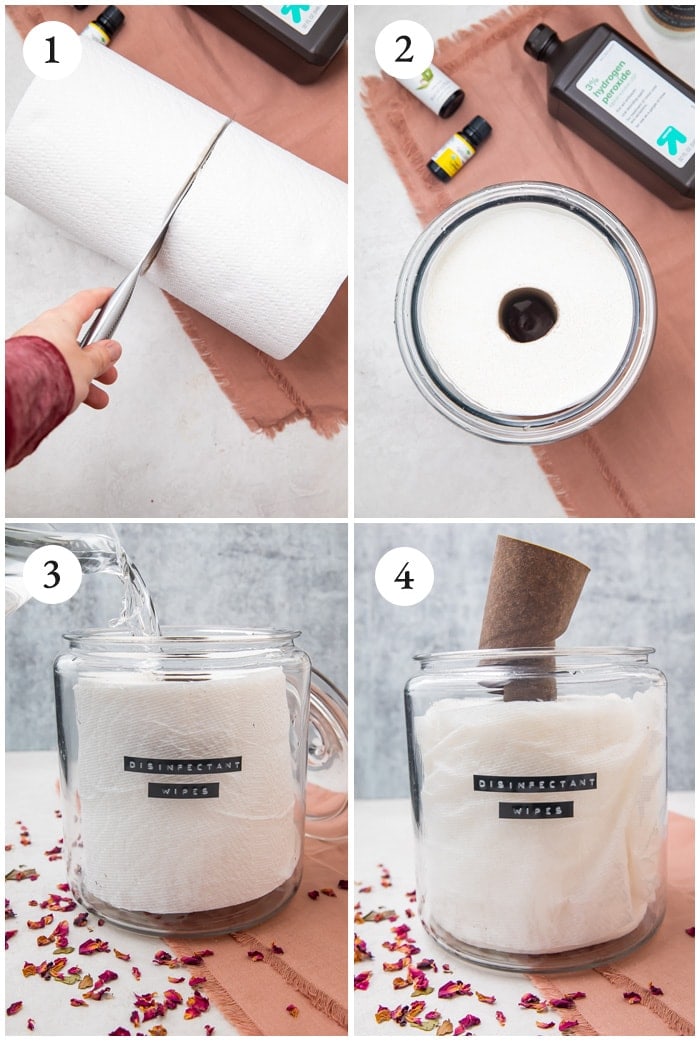
Isopropyl Alcohol or Ethanol?
So which one should you use in your wipes? And what’s the difference?
Rubbing alcohol, also called isopropyl alcohol, is frequently used on skin and is most commonly what is in hand sanitizer and in alcohol wipes (like what you would find at a doctor’s office). Ethanol, or ethyl alcohol, is much more commonly used in drinks and spirits.
Both are great for killing germs, but some research shows isopropyl alcohol is especially good at killing bacteria, while ethanol is especially great at destroying viruses.
So whether you use ethanol (ethyl alcohol AKA Everclear, etc.) or isopropyl alcohol, it really depends on what you’re after!
Note again that you need a 62-71% ethanol solution for effectiveness.
Use a Little Water
It may seem logical to use pure alcohol for disinfecting products, but some research actually shows that
“absolute ethyl alcohol, a dehydrating agent, is less bactericidal than mixtures of alcohol and water because proteins are denatured more quickly in the presence of water.”
For that reason, we use mainly alcohol in our DIY disinfectant and add a bit of water + a little hydrogen peroxide + essential oils for our mix.
Essential Oils
We like to use essential oils when making disinfectants for:
- scent and
- antiviral and cleaning properties
If you don’t have any at home, check out what Amazon has for organic pure essential oils here.
Here’s a list of what we like to use for antiviral or cleaning recipes (Bold denotes an oil studied for its antiviral properties):
- tea tree
- eucalyptus
- thyme
- rosemary
- cinnamon
- clove
- orange
- chamomile
- lemon
- peppermint
- lavender
Tea tree, eucalyptus, and thyme were actually studied for their antiviral properties, so we include these in most of our disinfectant blends. Clove, orange, rosemary, and cinnamon are known for their antiviral properties, too.
We love lemon because it just smells clean, but also because study showed it was actually more effective at decreasing stress than lavender.
Hydrogen Peroxide
Some research has shown that certain viruses “can be efficiently inactivated by surface disinfection procedures with 62–71% ethanol, 0.5% hydrogen peroxide or 0.1% sodium hypochlorite within 1 minute.”
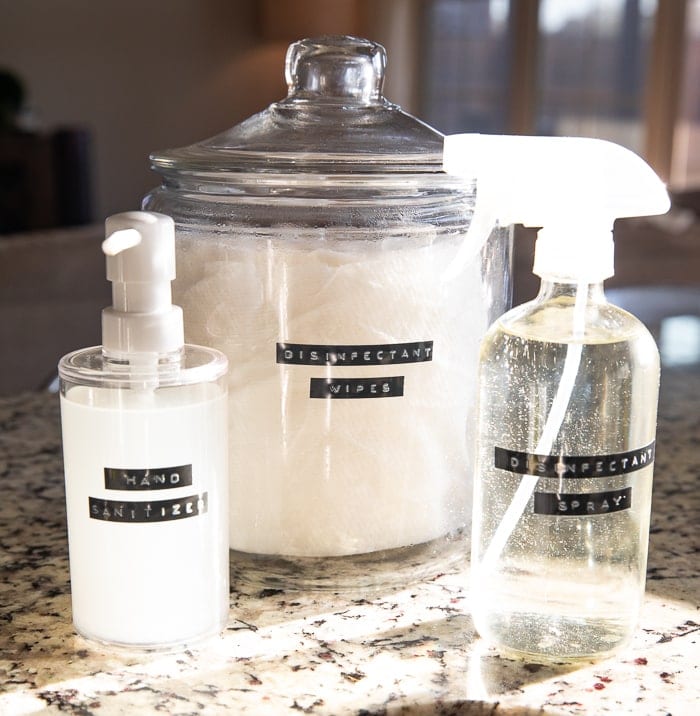
But How Do I Know if it’s 62-71% Alcohol?
It’s more complicated than you’d think, calculating solutions, but there’s a great resource out there to help you. I asked my mathematician friend to help me out, and he wrote up a very clear explanation of this calculation. Check it out!
In his calculation, we’re aiming for about 75% final alcohol percentage.
You can also use this online calculator:
DIY Hand Sanitizer / Disinfectant Recipes calculator – We’re making about 16 ounces here, which is 473 milliliters.
I use a little less hydrogen peroxide than this calculator suggests and I aim for a lower overall alcohol content, based on the above data, but you can simply use a bit less and the alcohol percentage will stay higher, MAKING SURE you do end up with at least 60% alcohol content, though. Reminder: it will not be effective at less than 60% alcohol content.
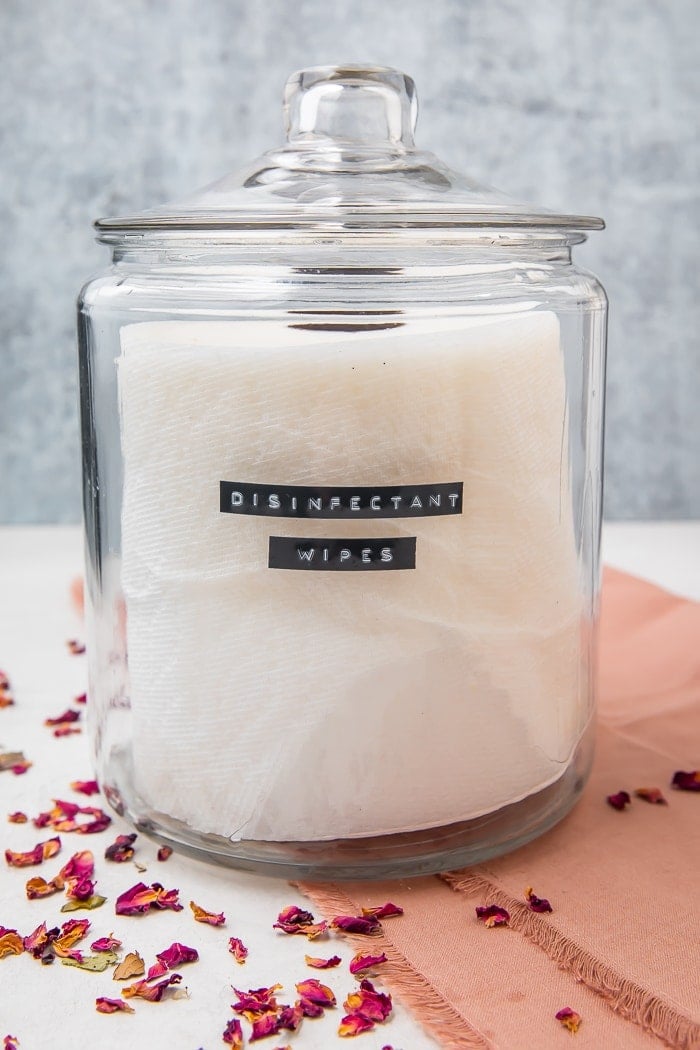
Don’t forget to check out our DIY disinfectant spray and DIY hand sanitizer!
DIY Disinfectant Wipes (DIY Lysol or Clorox Wipes)
Ingredients
- ½ roll select-a-size paper towels
- 18 ounces 95% ethanol, like Everclear or 99% isopropyl alcohol
- 5 ounces water
- 2 tablespoons hydrogen peroxide
- 45 drops essential oils
Instructions
- Cut your roll of paper towels in half using a non-serrated knife. Squeeze one half of the paper towels into a large jar.
- Mix all the liquid ingredients together in a spouted measuring cup, bowl, or pitcher and pour over the paper towels. Let solution soak into the paper towels, and then pull out cardboard insert.
- Optional step: Flip the paper towels over to help the liquid absorb. If your roll of paper towels comes out easily from your container, I recommend this step to help with saturation. If not, no big deal!
- Pull the center paper towel out just a bit to help make the wipes easier to remove from the jar.
Video
Notes
Important to Remember
You must absolutely make sure your mixture is 60%+ alcohol, or it will not be effective. My mathematician friend wrote an equation for calculating the desired final alcohol percentage,so check out his super helpful walk-through of this if you need help. For other types of alcohol, use this online calculator to help you know how much water to use. This calculator produces a final solution 75% alcohol, and we use slightly different amounts of other ingredients in our recipe. However, it is generally very helpful in knowing about how much water you can to use.Essential Oils
Types of essential oils to use:- tea tree
- eucalyptus
- thyme
- rosemary
- cinnamon
- clove
- chamomile
- peppermint
- lavender
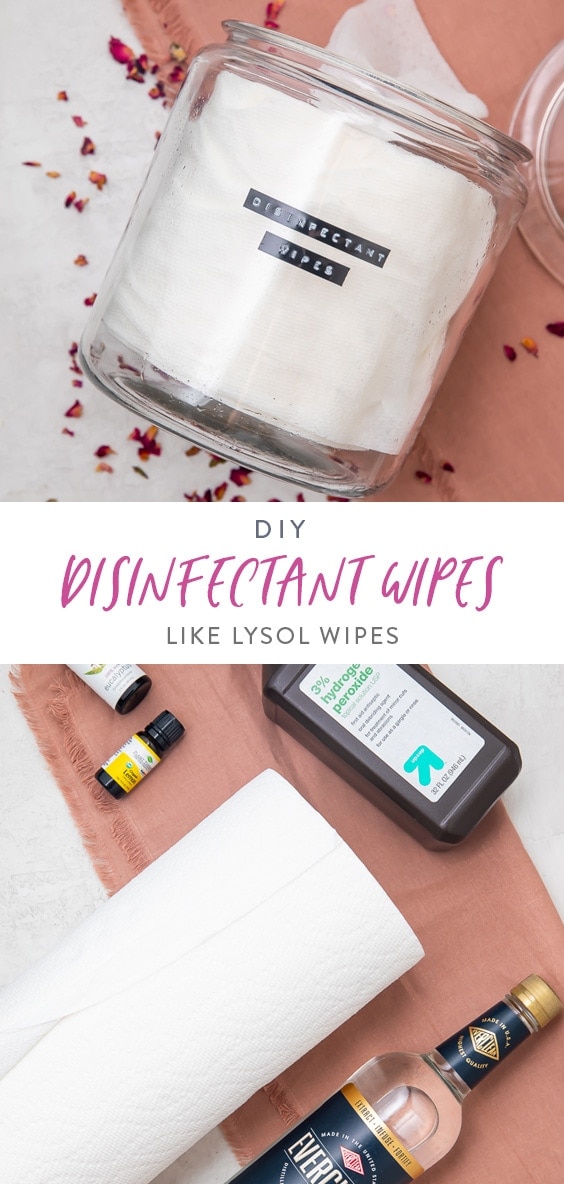

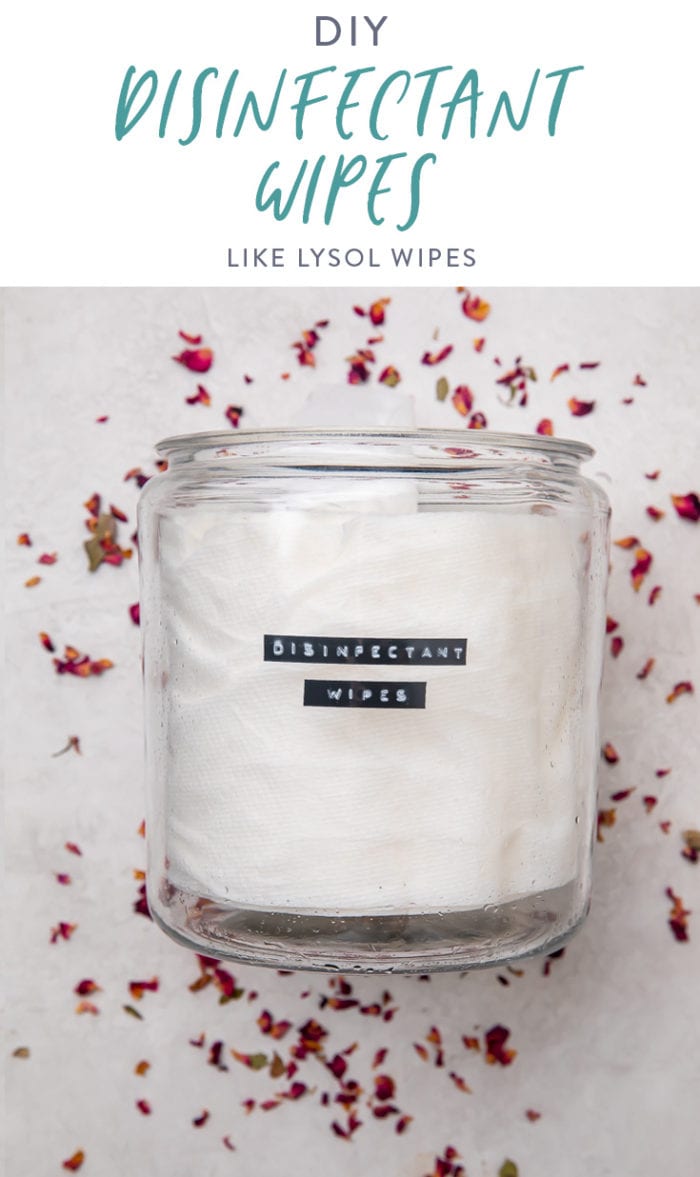
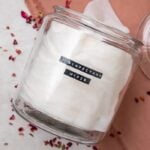
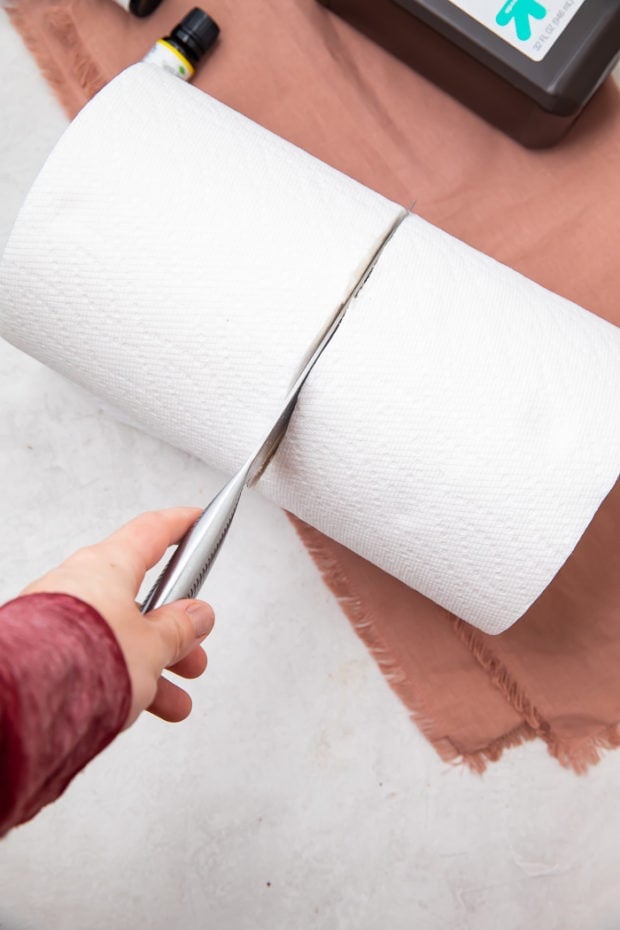
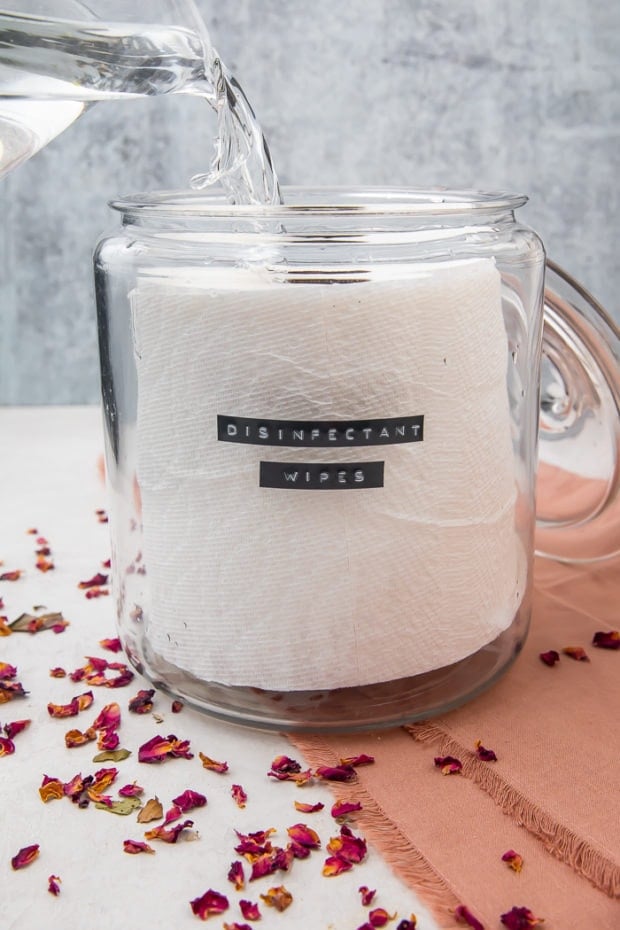
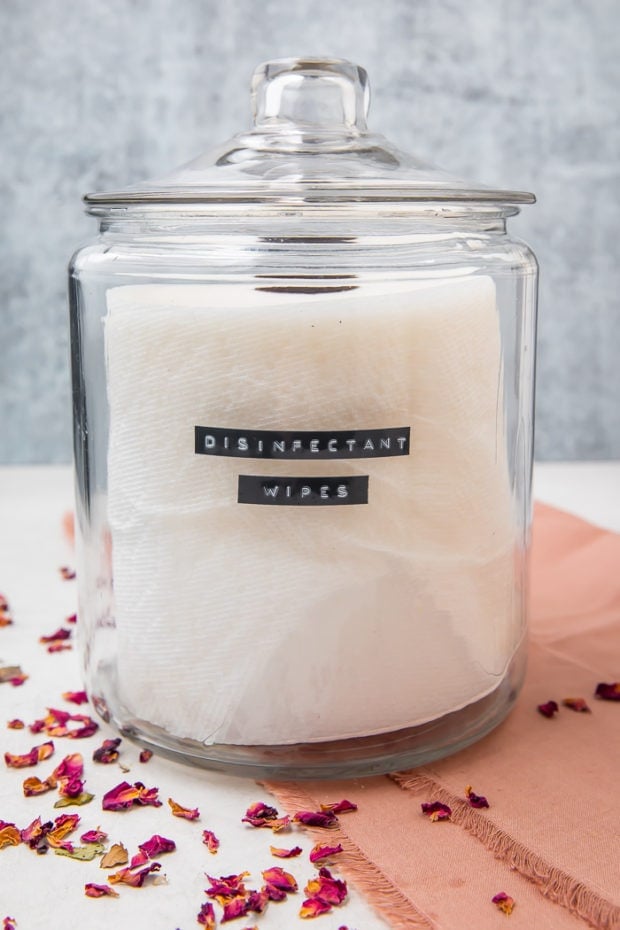
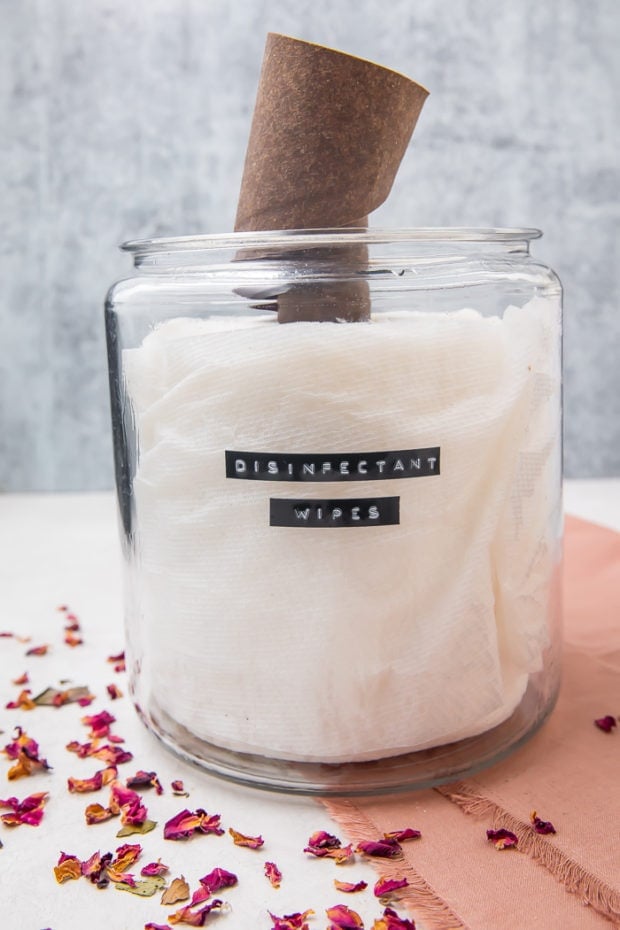

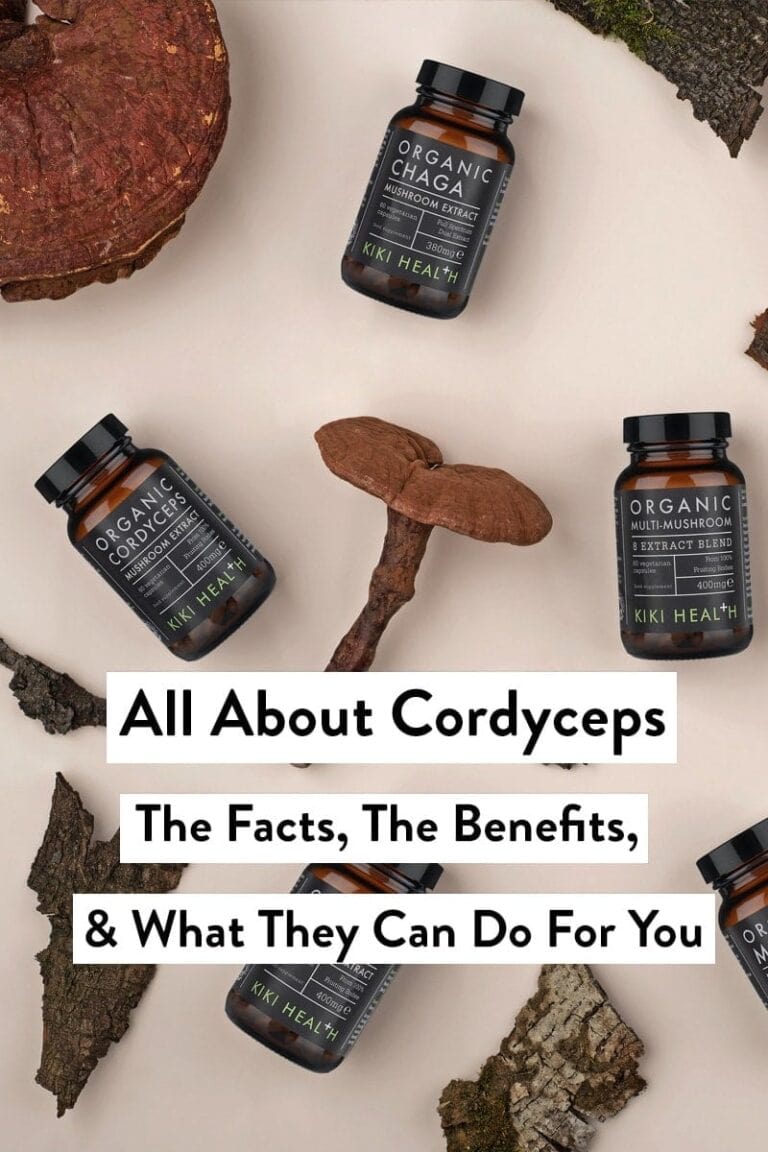

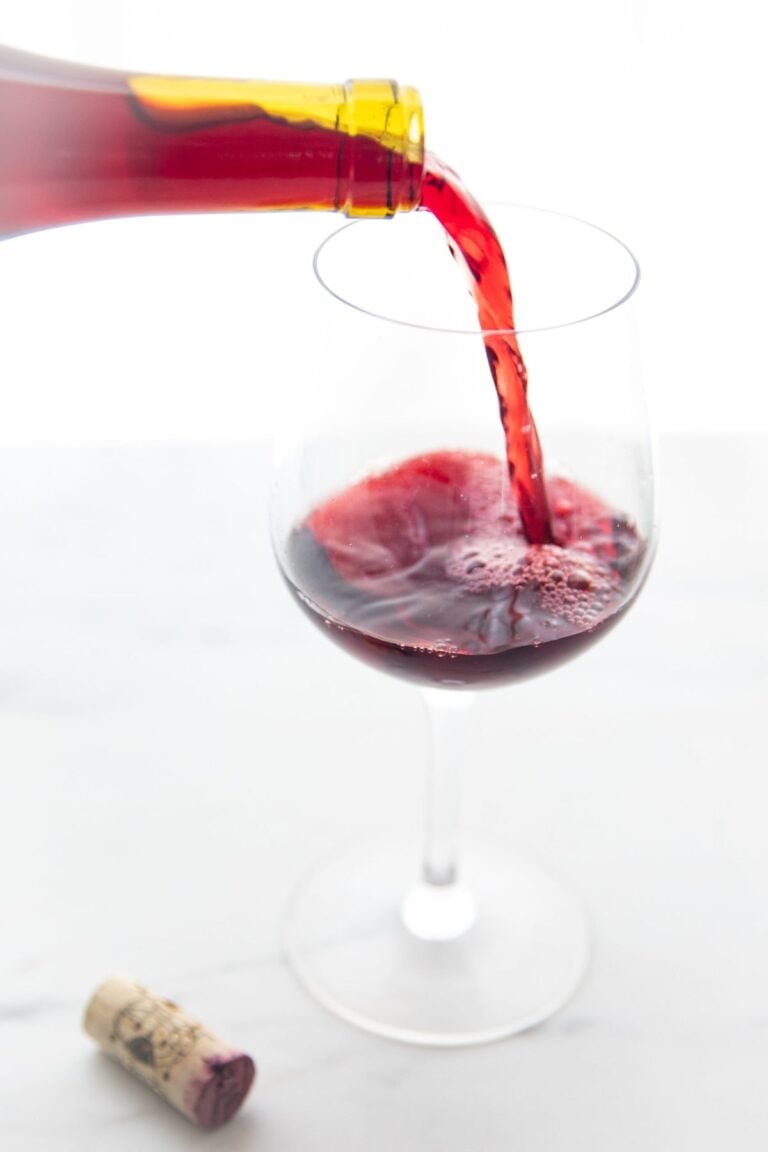
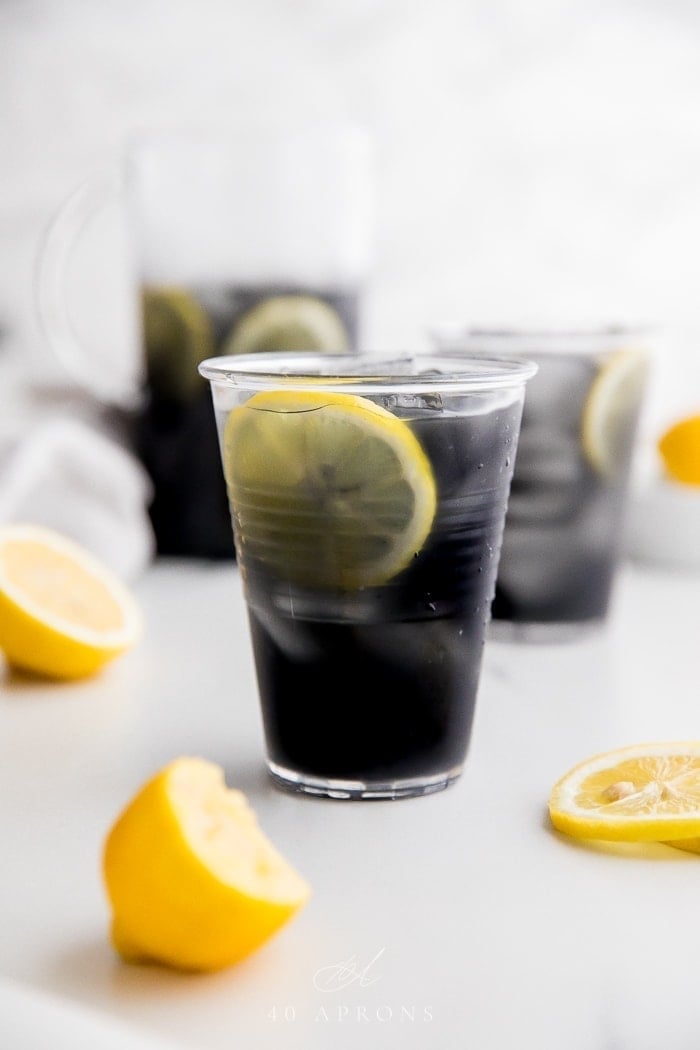
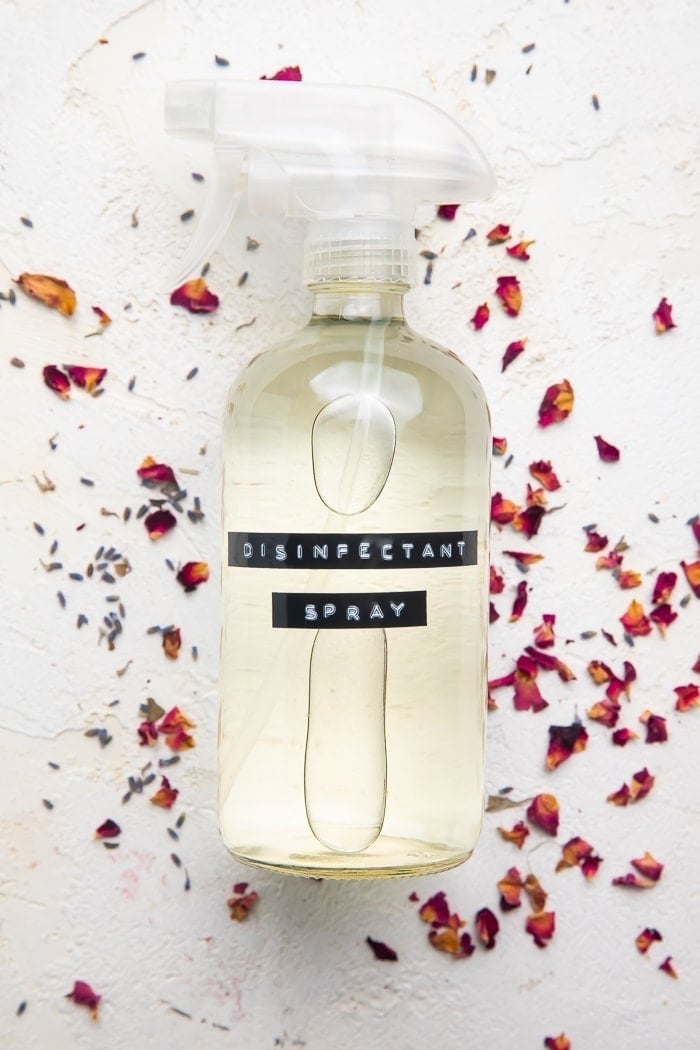










Love this!!! Does it really take 45 drops of essential oil? ? That seems like a lot, but I’ve also never made any cleaning products with them before so I just don’t know! 🙂 Also, do you have an approximate shelf life estimate on these?
Can’t wait to make these!
You can cut back if you want, but the oils are great! An average bottle has about 250 drops in it.
Could this be made and stored in a plastic or glass spray bottle and used as needed?
Absolutely! Check out the post on DIY Lysol Spray if you’re looking for a spray, too! https://40aprons.com/diy-disinfectant-spray-lysol/
Could one use a pack of baby wipes, open, then pour in some alcohol and/or peroxide? Seems like that would work, and would be easy to do.
I’ve never tried it with baby wipes, so I’m not sure, but it might work if you let them dry out first.
Hi there! Where did you get the label
Maker? So cute!
Staples!
What size container for the paper towel roll did you find worked best.
I just used a 1 gallon jar.
Where did you get the jar? What size?
Help! I was confused the first time I made these and now I nee to make more and only have 70% isopropyl alcohol…how would this change the recipe? Do I simply not add water to it, or will the hydrogen peroxide still dilute the alcohol too much?
I would definitely not add water to your mixture, and I would probably reduce the hydrogen peroxide to about 1 teaspoon.